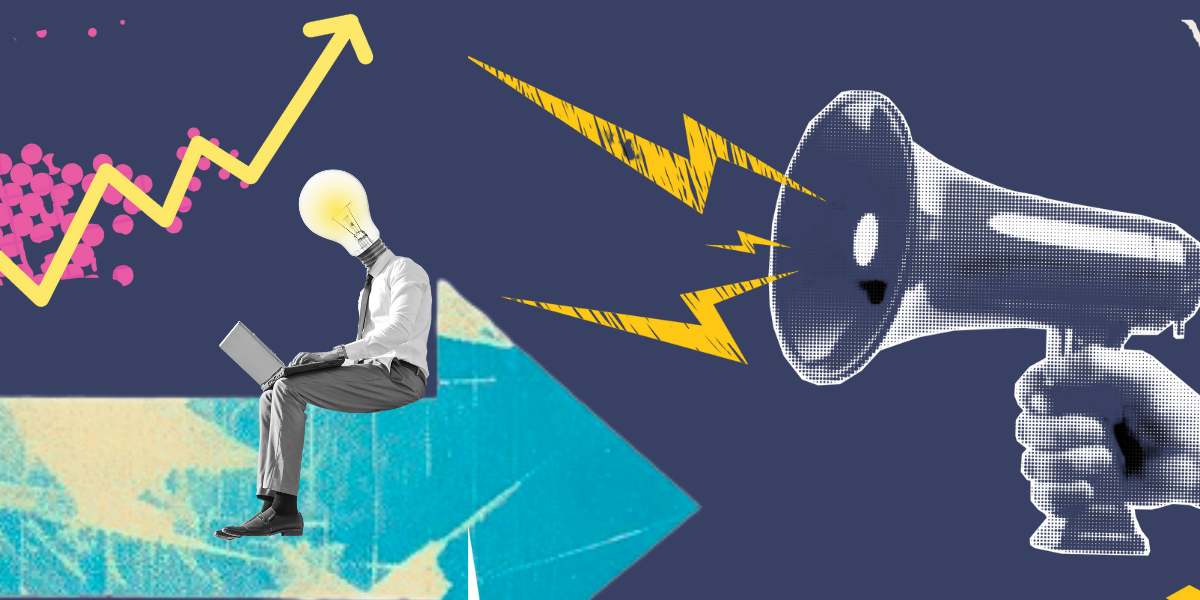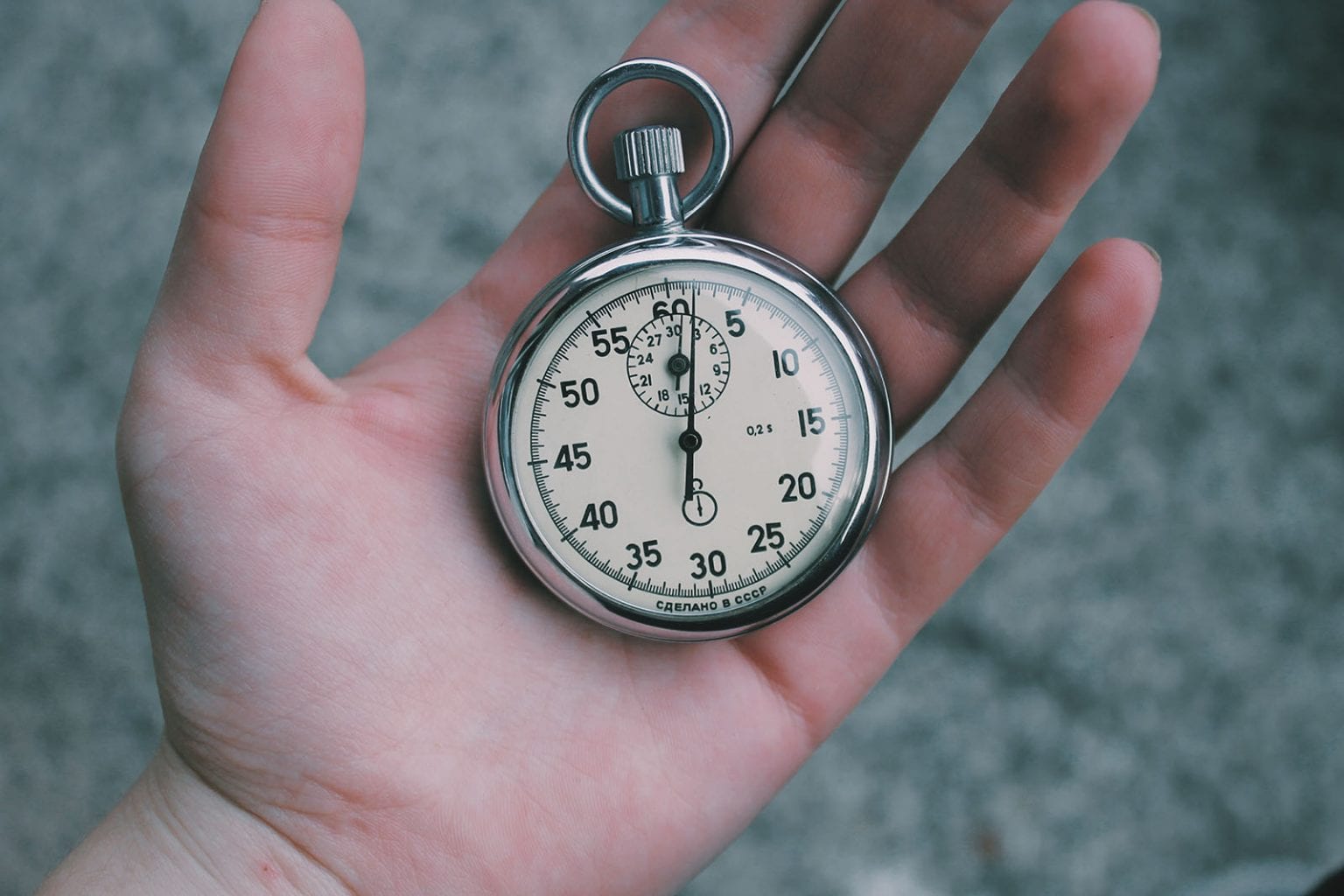What is a sales funnel? Key stages, examples, and how to build one
In this blog
- What is a sales funnel?
- Why is the sales funnel important?
- What are the five stages of the sales funnel?
- TOFU: Top of the funnel
- MOFU: Middle of the funnel
- BOFU: Bottom of the funnel
- How do you create a sales funnel?
- The power of lead magnets
- Sales funnel vs sales pipeline
- Why are well-structured sales funnels crucial for increasing conversions?
- Top tips for sales funnel management
- Optimising your B2B sales funnel
- 1. Map out your funnel clearly
- 2. Align sales and marketing
- 3. Qualify leads effectively
- 4. Nurture leads strategically
- 5. Use data to optimise continuously
- 6. Personalise your communication
- 7. Test and iterate constantly
- 8. Simplify processes
- 9. Focus on content that educates and adds value
- 10. Implement feedback loops
- What is sales funnel leakage?
- Ready to fill your funnel with high-quality leads?

Think about the last series you couldn’t stop watching. Maybe you caught a teaser clip on social media, watched a trailer and then your colleagues were buzzing about it at work. By the time it dropped, you were hooked – binge-watching straight through the night.
That’s exactly what a well-built sales funnel does for your business. The right content, at the right time, nudges your prospects along, stage by stage, until they’re ready to buy.
So how do you create a funnel that actually works? How do you make sure each stage keeps prospects moving closer to a purchase? And most importantly, how do you turn interest into action without wasting time or leads?
Lucky for you, that’s exactly what we specialise in. We’re an expert B2B lead generation agency, so full-funnel optimisation is our bread and butter.
In this guide, we’ll explain a sales funnel and its functions and offer actionable tips to help you maximise your marketing and sales efforts and fill your pipeline.
What is a sales funnel?
A sales funnel is a simple way to visualise the journey your potential customers take, from the very first time they hear about your brand to the point they make a purchase.
Think of it like an actual funnel – lots of people enter at the top, but only a small number make it all the way through.
The funnel has stages, and while the exact names or number of stages can vary, the idea is the same: guiding prospects from awareness to decision.
At each stage, you use different strategies and tactics to nurture, educate, and gently steer people towards buying.
You might also hear it called a marketing funnel or a purchase funnel. Sometimes it’s described from the buyer’s perspective, sometimes the seller’s, but at the end of the day, it’s all about keeping your customer’s journey front and centre while making it easier for them to reach the finish line.
Why is the sales funnel important?
It reflects the customer journey
The sales funnel is essentially a mirror, reflecting the customer’s journey from that initial curious click to the celebratory moment of purchase and beyond.
It’s all about nurturing a budding relationship at every touchpoint, ensuring a smooth transition from one stage to the next.
But the customer journey isn’t merely a voyage of discovery for customers but a treasure trove of data and insights for sales and marketing teams keen to fine-tune their strategies.
It helps you optimise the sales journey
A sales funnel can help bring a sense of order to the often chaotic process of acquiring and retaining existing customers.
But this isn’t just about bringing some zen to your sales team. By mapping the different pathways your prospects travel and where they get lost along the way, you can make your sales process more effective.
Each stage of the sales funnel should be tailored to the needs of your customers and help move them onto the next stage, ultimately securing a sale. Pinpoint the areas that require more attention or a sprinkle of creativity to enhance sales performance.
Align sales and marketing
Understanding the sales funnel is a key part of aligning sales and marketing efforts.
If both teams work on understanding and optimising the funnel, it can foster a collaborative spirit instead of a competitive one. After all, the teams ultimately share a common goal – driving more sales.
By clearly understanding the sales funnel, your sales reps and marketers can collaborate to identify problems, produce better processes and collateral, and tailor strategies that resonate with customers at every stage.
Conversion Rate Optimisation (CRO)
The sales funnel is a veritable playground for CRO enthusiasts. While you might think exclusively of website AB tests, CRO opportunities can be found in many places on your customer journey, from emails and webpages to proposals and pitch decks.
By analysing prospective customers’ behaviour within the funnel, tweaks and adjustments can be made to enhance conversion rates. It’s about rolling up the sleeves and diving into the data to unearth opportunities to nudge customers closer to the ‘buy now’ button.
Map content to funnel stages
The beauty of a well-oiled sales funnel is its ability to seamlessly guide potential buyers through their buying journey.
A big part of this guidance is delivered through content. Mapping content to each stage of the funnel avoids throwing information into the digital abyss and helps you deliver the right message to the right person, at the right time.
What are the five stages of the sales funnel?
Although models of the sales funnel vary, we’ll use a five-stage version that includes awareness, interest, desire, action, and loyalty.
As we’ve seen, sales and marketing content should be aligned with these different stages of the funnel. For the five funnel stages, we have three content categories: top, middle, and bottom.

TOFU: Top of the funnel
In the TOFU stage, the main aim is to spark interest in potential customers and make them aware of your brand, products and solutions.
It’s essential to identify your audience, understand their challenges, and tailor your content to offer solutions to their pain points. Your content should also be engaging and easily digestible.
Think short videos on social media, educational blog posts, big content marketing pieces, guest appearances on established podcasts, and online advertising. At this stage, you can get creative, but be careful not to stray from your goals in the hunt for vanity metrics.
This stage isn’t just about casting a wide net; it’s about attracting the right kind of attention from individuals who will find value in what you offer. It’s also not about securing a sale – be helpful, not pushy. By doing so, you’re laying the foundation for deeper engagement as people move down the sales funnel.
The goal is to create awareness, educate, and build trust with a broad audience.
Stage 1: Awareness
The awareness stage is the first point of contact between potential customers and your brand.
It’s crucial to create a positive impression to encourage further engagement. It’s a long-term game, though: 95% of your audience won’t be “in market” when they discover you, but with good awareness, they will be able to recall your brand when the time comes.
Leverage social media and content marketing to highlight your brand and provide value. Identifying and addressing your audience’s pain points during this stage is key to getting the right people to discover your brand..
Stage 2: Interest (and consideration)
After igniting awareness, the interest stage aims to nurture curiosity about your offerings.
Here, prospects delve a bit deeper into the solutions you provide, using content like eBooks, webinars, or newsletters that continue to educate and engage potential customers.
In many versions of the funnel, this phase may be called consideration (or it is added as an additional stage). Having become aware of your potential solution, the prospect has an interest and would consider a purchase, but not before gaining a greater understanding.
The goal is to maintain interest, encourage further research, and provide the details that will move them to the next stage.
MOFU: Middle of the funnel
MOFU is where the relationship deepens. The content in this stage should be more product-centric, showcasing how your solutions stand out.
It can be effective to use channels like email marketing, targeted social media campaigns, and webinars, with content types such as case studies, product demonstrations, and customer testimonials.
The goal is to nurture the relationship and build desire for your products or services.
Stage 3: Desire (and evaluation)
The Desire stage is about fuelling the interest of potential customers and nudging them closer to making a decision.
But your brand is unlikely to be the only option they have come across, so this stage also includes evaluation. The prospect is researching and evaluating multiple options, to ensure they get the decision right.
Research by Harvard Business Review shows that emotional concerns play a large part in B2B buying decisions:
A fear of failure often nags at buyers who spend large amounts of money and make decisions that may affect revenues or many employees.
Showcase the value and benefits of your product or service, illustrating how it addresses their needs or solves their problems. Utilising testimonials and customer reviews plays a pivotal role in building trust and reassuring the buyer that they are not making a mistake.
On our site, for example, we have an ROI calculator to help people understand the potential return, (anonymised) campaign results are published live, and our awards, client success stories, and review scores are found across the site.
BOFU: Bottom of the funnel
In the BOFU stage, the content should be focused on conversion and retention.
Utilise channels like targeted email campaigns and retargeting ads, with content types such as product webinars, free trials, and customer success stories. The goal is to prompt action and build loyalty.
Stage 4: Action
The Action stage is all about encouraging potential customers to take a decisive step, be it making a purchase or signing up for a service.
Crafting compelling calls to action and offering deals or incentives can be effective strategies.
The sales team plays a crucial role in providing personalised guidance and assurance to prompt action. For any B2B sales pipeline that includes a demo before purchase, sales enablement content will play a crucial role in the purchase decision. From buyer’s guides to proposal decks, this content plays a crucial role at the pointy end of the funnel.
Stage 5: Loyalty
So, you’ve made a sale and have a brand new customer on your books. Job done, right?
In fact, no. After a successful action comes the Loyalty stage. This part focuses on ensuring customer satisfaction and building a lasting relationship.
Implement strategies like follow-up emails, satisfaction surveys, and loyalty programs to encourage repeat business and referrals.
Providing excellent customer service and continuing to offer value through helpful content and support are key to nurturing loyalty.
How do you create a sales funnel?
Understanding your target audience
The cornerstone of building a sales funnel is a deep understanding of your B2B target market.
Dive into their needs, preferences, and behaviours. Know what keeps them up at night, and how your product or service can be the hero in their story. It’s about getting into the nitty-gritty of who your audience is, what they want, and how they behave.
Build your funnel with content
Ensuring you have content for each stage of the sales funnel is crucial. Map your existing content to conduct a content audit to identify any gaps.
Incorporate the sales funnel stage in your content calendar to ensure a balanced distribution of content across all stages.
Tailor the narrative at each stage to guide your customers closer to making a purchase, ensuring a smooth transition from one stage to the next.
Tools and platforms
With the blueprint of your sales funnel in place, it’s time to bring in the builders – the tools and platforms that help create and manage it.
Platforms like Salesforce are stellar for managing customer relationships and analysing funnel performance. Tools like Google Analytics are great for tracking customer behaviour through the funnel, while email marketing platforms like HubSpot are handy for nurturing leads through content.
When it comes to bottom-of-the-funnel actions, Sopro’s multi-channel prospecting service enables you to contact your entire B2B audience directly and meet them where they are. With coordinated outreach across channels, corporate gifts to help sweeten the deal, and your prospects’ website actions revealed in the portal,
Measuring success
Measuring the success of your sales funnel is crucial to understanding how well it’s performing.
Luckily, there’s no shortage of sales pipeline metrics to help you; conversion rates at each stage, customer lifetime value, and return on investment are key indicators.
They provide a clear picture of where you’re shining and where there’s room for a little more polish.
The power of lead magnets
Definition and importance
Lead magnets are those irresistible nibbles of value that tease and lure your prospects into the sales funnel, exchanging their contact information for your insightful goodies.
They are crucial because they act as the gateway into your funnel, capturing the interest of potential customers and coaxing them into engaging with your brand.
Lead magnet examples
- Reports and whitepapers: Offering insightful ebooks or whitepapers on industry-specific topics not only showcases your expertise but also provides genuine value to your audience.
- Webinars and online courses: Hosting a webinar or offering courses can help educate your audience on topics that matter to them, allowing them a taste of what your brand can offer.
- Free trials and demos: Letting your prospects experience your product or service firsthand can lower the resistance and help them see the value themselves.
- Discounts and special offers: Everyone loves a good deal, so offering a discount or a special offer in exchange for their contact information can be a great incentive.
- Checklists and templates: Simplifying a complex process with a ready-to-use template or a handy checklist can save your audience time and effort, and they’ll thank you for it.
These lead magnets are instrumental in moving potential customers down the sales funnel, gently transitioning them from awareness to consideration and eventually to making a buying decision.
Sales funnel vs sales pipeline
Sales pipeline definition
The sales pipeline zeroes in on individual sales deals, tracking prospects’ journeys from lead to customer across distinct stages of the sales process.
While the pipeline is deal-centric, the funnel is customer-centric, each offering a unique perspective on the sales journey.
Funnel and pipeline integration
Marrying the sales funnel and sales pipeline can foster enhanced sales management. This marriage ensures a smooth handover from marketing to sales, making sure the right leads are nurtured and prospects continue to be engaged post-conversion.
For a richer understanding and a detailed comparison, hop over to our comprehensive guide on sales funnels vs sales pipelines.
Why are well-structured sales funnels crucial for increasing conversions?
Guides prospects through a clear journey
When your funnel is structured, every stage, from awareness to decision, is mapped out. Prospects know what to expect, and you can deliver the right message at the right time, making it easier for them to take the next step.
Reduces leakage
Without a clear funnel, leads slip through the cracks. A solid structure highlights where prospects drop off, so you can fix gaps and keep them moving toward conversion.
Supports personalised engagement
Knowing where someone is in the funnel allows you to tailor your messaging. Early-stage leads need education, mid-funnel prospects want proof, and late-stage buyers need reassurance. Personalised content for each stage dramatically improves conversion rates.
Optimises resources
A clear funnel shows you where to focus your efforts, whether it’s generating more top-of-funnel leads or nurturing mid-funnel prospects, so your marketing and sales teams aren’t wasting time on dead ends.
Measures what matters
With a structured funnel, it’s easier to track metrics like conversion rates at each stage. This insight helps you tweak your strategy, experiment with messaging, and ultimately, turn more leads into customers.
Top tips for sales funnel management
Managing a sales funnel isn’t a task you can tick off your list and forget about. It’s a continuous sales cycle of monitoring, analysing, tweaking, creating and training. Let’s delve into the core elements of sales funnel management that ensure your funnel doesn’t just exist, but thrives.
Monitoring and analysis
To maintain a high-performing funnel, you should monitor prospects’ journey from the top to the bottom. Analyse why something happens, not just how much it does. Why are prospects getting stuck in a particular stage? Why did a promising lead go cold?
Looking at the conversion rates of each stage, the time spent in each stage, and the volume of leads at each stage can provide a health check on your funnel. If you can, find out why leads went cold. This process helps to identify bottlenecks and opportunities that could accelerate the sales journey.
Optimisation
Every stage of the sales funnel has its unique needs and challenges. Optimisation is about tailoring strategies to each stage to nudge prospects closer to the buying decision.
Regular A/B testing can be a goldmine in discovering what resonates with your audience and what doesn’t. It’s about the iterative process of refining and enhancing the sales funnel to improve conversion rates.
Competitor analysis can be good for ideas, but the best source for optimisations is getting the sales and marketing teams working well together: get marketing on the sales calls, have regular meetings, and make it easy for sales to request new collateral.
Training and development
A well-trained sales team is your ace in the hole. Ensuring your team is well-versed in not only your offerings but also the dynamics of the sales funnel is crucial.
Training programs that focus on understanding customer behaviours, navigating the sales funnel, and employing effective sales strategies are invaluable.
Development sessions that hone your sales team’s skills in handling objections, nurturing relationships, and closing deals can significantly impact the effectiveness of your sales funnel management.
Read our guide on setting up a lead disposition process for information on further optimising your sales funnel.
Technology integration
A sales funnel runs on watertight processes, but it scales on technology. The right stack gives you visibility, control, and the ability to optimise at every stage.
The essentials include:
- CRM systems: this is your central source of truth for tracking every prospect interaction and keeping sales and marketing aligned.
- Outreach automation: the tools that manage multichannel sequences, from email to LinkedIn, so prospects stay consistently engaged.
- Analytics and reporting: dashboards that highlight where leads are entering, where they’re dropping off, and how fast they’re moving through the funnel.
- Data enrichment and intent tools: these ensure you’re reaching the right contacts at the right time through precision targeting.
That’s where Sopro makes the difference. Our multichannel marketing service combines a decade of expertise with proprietary outreach tech, real-time data enrichment, and constantly refreshed contact intelligence to put your message in front of the people who matter.
And it doesn’t stop there. Our interactive portal gives you complete visibility into every email, every prospect, every campaign. See which segments engage, which messages land, and how opportunities flow through your funnel…all in real time.
Optimising your B2B sales funnel
If your sales funnel isn’t optimised, you’re letting leads slip through the cracks.
That’s why you need to streamline each stage, remove friction, and guide prospects smoothly from first click to final purchase. Do this and suddenly, more of them are turning into paying customers.
1. Map out your funnel clearly
Know every stage, from awareness to conversion, and define what a lead looks like at each stage. You can’t fix the leaks if you don’t know where they are coming from or where the leads drop off. A clear map makes it easier to optimise every step.
2. Align sales and marketing
Sales and marketing need to speak the same language. Marketing generates leads, but sales nurtures them. Alignment ensures seamless messaging, timing, and follow-ups, improving conversion rates across the funnel.
3. Qualify leads effectively
Not every lead is ready to buy. Use firmographic data, behavioural signals, and engagement metrics to focus on leads with the highest potential. This avoids wasted time and reduces funnel leakage.
4. Nurture leads strategically
B2B decisions take time. Use a structured lead nurturing programme, emails, content, webinars, and touchpoints, to educate, engage, and guide prospects toward a purchase. Personalised, relevant communication at each stage keeps leads moving forward.
5. Use data to optimise continuously
Track conversion rates, drop-offs, email engagement, content interactions, and website behaviour. Analytics show you exactly where leads are getting stuck or leaving, so you can fix the problem areas.
6. Personalise your communication
Tailor emails, content, and calls to each lead’s role, company, and stage in the funnel. Personalisation builds trust and engagement, which is critical for B2B audiences who are cautious and research-heavy.
7. Test and iterate constantly
No funnel is perfect out of the gate. A/B test landing pages, email subject lines, CTAs, and content formats. Use results to refine and improve your approach. Small adjustments can make a big difference.
8. Simplify processes
Remove friction wherever you can. Long forms, complex sign-ups, or confusing processes will make leads drop out. Keep steps simple, clear, and fast.
9. Focus on content that educates and adds value
B2B buyers want insight, not sales pitches. Use whitepapers, case studies, videos, and webinars to help prospects solve problems and understand your value. Valuable content moves them further down the funnel.
10. Implement feedback loops
Collect input from sales teams, customers, and analytics to understand pain points and friction. Act on this feedback quickly; otherwise, the same issues will keep causing leaks.
What is sales funnel leakage?
Sales funnel leakage happens when leads slip through the cracks at any stage of your funnel instead of moving toward a sale.
Think of it like a leaky bucket: every drop lost is a missed opportunity. Even small leaks at multiple points can add up to big revenue lost.
The good news? Most leaks are fixable once you know where to look – here are some telltale signs you have a leak:
Unclear messaging
If your audience doesn’t immediately understand your value, they won’t stick around. Too much jargon, vague promises, or generic statements can leave leads confused. Every touchpoint, emails, landing pages, social posts, needs to answer: “What’s in it for me?”
Poor lead qualification
Not every lead is ready to buy, and not every lead fits your ideal customer profile. Pushing unqualified prospects through the funnel wastes time and risks frustrating them. Effective lead qualification ensures your team focuses on leads with the highest chance of converting.
Weak follow-ups
Even interested leads can lose momentum if follow-ups are slow or generic. Missing that crucial timing, like not responding promptly to an enquiry, can push a lead straight to a competitor. Personalised, timely follow-ups are key to keeping leads engaged.
Overcomplicated processes
Every extra step in your funnel is a potential exit point. Lengthy forms, confusing sign-ups, or slow website load times can frustrate leads and make them bounce. Simplify, streamline, and remove friction wherever possible.
Generic communication
Mass emails and one-size-fits-all messages feel impersonal and easy to ignore. Leads want to feel understood, not like a name on a spreadsheet. Using rich customer data to tailor your communications reduces this type of leakage.
Lack of nurturing
Leads rarely convert immediately. Without a structured nurturing strategy, emails, content, and reminders, they’ll forget you or lose interest. Lead nurturing helps guide prospects step by step toward a purchase decision.
Misaligned sales and marketing
When marketing generates leads but sales doesn’t know how to handle them, or vice versa, opportunities fall through the cracks. Alignment ensures every lead gets the right message, from the right person, at the right time.
Ignoring feedback and data
Not tracking why leads drop out of your funnel is a huge cause of leakage. Without insight into pain points, drop-off stages, or customer behaviour, you can’t fix the leaks. Analytics and feedback loops help identify and correct issues quickly.
Expert Q&A: Sales funnels
Which metrics can be tracked to ensure B2B sales funnel effectiveness?
To ensure your funnel’s working effectively, track the following metrics:
- Lead conversion rate → This will help you see the percentage of leads progressing from one funnel stage to the next, helping you identify bottlenecks and drop-off points
- Ratio of marketing qualified leads (MQLs) to sales qualified leads (SQLs) → Use this to track the quality of your leads. A good ratio reflects strong alignment between your marketing and sales teams.
- Average deal size → The average value of deals closed provides insight into the type and scale of opportunities in your funnel.
- Sales cycle length → This represents the time it takes for leads to progress through the funnel and become customers. Long cycles can be an indicator of an inefficient process.
- Win rate → The percentage of sales opportunities that turn into closed deals is a critical measure of your team’s effectiveness.
- Pipeline value → Use this to predict future revenue by combining the total value of all open deals in our funnel.
Ready to fill your funnel with high-quality leads?
Creating a successful sales funnel takes time. It’s a trial-and-error process, so make sure you seek out customer feedback and adjust accordingly.
Partner with a lead generation agency that knows how to target, engage, and convert your ideal customers to improve your sales funnel and turn it into a seamless process.Book a demo to see how we can get your B2B sales funnel working harder than ever.








Share